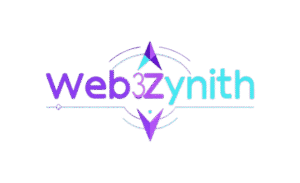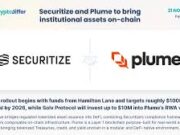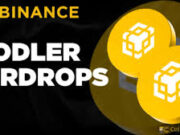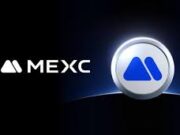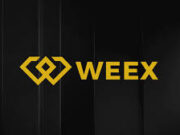On June 24, 2025 (UTC+8), the financial technology world buzzed with excitement as Fiserv, a Fortune 500 payments powerhouse, unveiled a groundbreaking collaboration with Circle, Paxos, and PayPal to launch a new digital asset platform anchored by its own U.S. dollar-pegged stablecoin, FIUSD, on the Solana blockchain. This move signals a seismic shift in how traditional finance is embracing blockchain technology, aiming to bring instant, compliant, and scalable digital payments to millions of businesses and consumers worldwide. Let’s dive into what this announcement means, why it’s a game-changer, and how it could reshape the future of global commerce.
The Players: A Powerhouse Partnership
Fiserv, processing a staggering 90 billion transactions annually for 10,000 financial institutions and 6 million merchants, is no stranger to moving money at scale. By teaming up with Circle (issuer of USDC), Paxos (behind PayPal’s PYUSD), and PayPal (a global payments leader), Fiserv is leveraging some of the most trusted names in fintech and crypto to build a robust, bank-friendly digital payments ecosystem. The choice of Solana—a blockchain known for its lightning-fast transactions and low costs—further underscores Fiserv’s ambition to deliver efficiency without compromising scalability.
This collaboration isn’t just a tech experiment; it’s a strategic alignment of industry giants aiming to bridge the gap between traditional banking and the decentralized future. With FIUSD, Fiserv is positioning itself as a pioneer in “programmable money,” designed to reduce friction in legacy payment systems while maintaining the trust and compliance that financial institutions demand.
FIUSD: A Stablecoin Built for Banks and Merchants
At the heart of Fiserv’s announcement is FIUSD, a stablecoin pegged 1:1 to the U.S. dollar, set to debut by the end of 2025. Unlike crypto-native stablecoins primarily used for trading, FIUSD is engineered for real-world commerce. It will integrate seamlessly into Fiserv’s existing infrastructure, including its Finxact core processing platform and Clover POS systems, enabling 24/7 settlements for banks and merchants without costly overhauls. Built-in features like fraud monitoring, risk management, and compliance tools make FIUSD a “financial institution-friendly” coin, as described by Sunil Sachdev, Fiserv’s Head of Embedded Finance.
What sets FIUSD apart is its interoperability. Through its partnership with PayPal, Fiserv plans to link FIUSD with PYUSD, enabling smooth cross-platform transactions for cross-border payments, merchant settlements, and real-time payouts. Imagine a small business in Brazil getting paid instantly by a partner in Boise, or a freelancer receiving funds on a Sunday—FIUSD aims to make these scenarios a reality, slashing the delays and fees of traditional payment rails.
Why Solana?
Solana’s selection as the blockchain for FIUSD is no accident. With over $11 billion in stablecoin liquidity and a reputation for processing thousands of transactions per second at a fraction of the cost of competitors like Ethereum, Solana is a natural fit for enterprise-scale payments. Its speed and scalability align perfectly with Fiserv’s goal of handling a portion of its $90 billion in annual transactions on-chain. Plus, Solana’s existing support for USDC (issued by Circle) ensures FIUSD will operate in a mature, regulated stablecoin ecosystem.
Fiserv’s choice also reflects a broader trend: traditional finance is gravitating toward blockchains that prioritize performance and compliance. By building on Solana’s infrastructure, with Paxos and Circle providing regulated stablecoin issuance, Fiserv is creating a platform that’s both cutting-edge and trustworthy—a rare combination in the often volatile crypto space.
The Regulatory Tailwind: GENIUS Act
The timing of Fiserv’s announcement couldn’t be better. Just days before, the U.S. Senate passed the GENIUS Act, a bipartisan bill that establishes a regulatory framework for stablecoins. Requiring 1:1 backing with cash or U.S. Treasuries, regular audits, and stringent anti-money laundering controls, the legislation provides the clarity traditional financial institutions need to dive into digital assets. With President Donald Trump urging the House to pass the bill swiftly, the path is clearing for enterprise-scale stablecoin adoption.
This regulatory momentum likely gave Fiserv the confidence to go all-in on FIUSD. Unlike pilot programs or sandbox experiments (looking at you, JPMorgan’s JPMD), FIUSD is a full-stack solution designed for immediate, widespread use. As Takis Georgakopoulos, Fiserv’s COO, put it, “Fiserv is uniquely positioned to advance stablecoin-powered payments and help democratize access to blockchain financial services.” The GENIUS Act’s framework ensures FIUSD can operate compliantly across jurisdictions, giving Fiserv an edge in both U.S. and international markets.
Beyond Stablecoins: Tokenized Deposits and Future Use Cases
Fiserv isn’t stopping at FIUSD. The company is exploring tokenized deposits—blockchain-based representations of bank balances that offer the benefits of stablecoins with a structure more aligned with banking regulations. These could reduce capital charges for lenders, making them a compelling option for financial institutions. Fiserv is also in talks with additional partners to expand use cases for FIUSD and tokenized assets, from streamlining vendor payments to enabling new financial products.
The potential is massive. Stablecoins, now a $247.2 billion market, are no longer just for crypto traders. They’re becoming a backbone for online merchants, cross-border remittances, and even everyday transactions. With Fiserv’s vast network, FIUSD could accelerate this trend, bringing blockchain’s efficiency to Main Street businesses and consumers.
What’s Next for Fiserv and FIUSD?
Fiserv’s stock jumped 3–8% on the news, reflecting investor optimism about its blockchain pivot. Circle’s shares soared 15%, buoyed by its role in FIUSD’s infrastructure and its 700% stock surge since its June 2025 IPO. PayPal and Paxos also stand to gain as their stablecoin expertise reaches Fiserv’s massive client base. But the real winners could be the banks and merchants who adopt FIUSD, gaining access to faster, cheaper, and more flexible payment solutions.
As FIUSD rolls out, all eyes will be on its adoption rate and interoperability with other stablecoins. If Fiserv delivers on its promise of seamless integration and cross-platform functionality, FIUSD could become a cornerstone of the digital payments ecosystem. And with competitors like Amazon and Walmart reportedly eyeing their own stablecoins, the race to dominate blockchain-based payments is heating up.
The Bigger Picture
Fiserv’s FIUSD launch is more than a corporate milestone—it’s a sign that traditional finance is no longer sitting on the blockchain sidelines. By partnering with Circle, Paxos, and PayPal, and building on Solana’s high-performance blockchain, Fiserv is betting big on a future where digital dollars move as easily as emails. As regulatory clarity grows and stablecoin adoption accelerates, FIUSD could redefine how we pay, settle, and transact in a global economy.
So, whether you’re a merchant waiting days for funds to clear, a bank looking to modernize payments, or just someone curious about the future of money, keep an eye on FIUSD. This isn’t just another stablecoin—it’s a bold step toward a faster, fairer, and more connected financial world.
Sources:
- CoinDesk: “Stablecoin News: Fiserv Makes Entrance”
- The Block: “Fortune 500 firm Fiserv to launch stablecoin on Solana using Paxos and Circle infrastructure”
- Blockworks: “Solana-based stablecoin to settle merchant and bank transfers instantly”
- Bloomberg: “Fiserv to Offer Own Stablecoin, Partners With PayPal and Circle”
- Fiserv Press Release: “Fiserv and PayPal Expand Partnership to Advance Stablecoin Payments”
- Posts on X reflecting market sentiment
